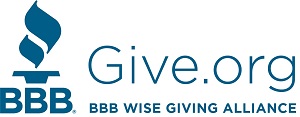 The following article was one in a twelve-part series of thought pieces from nonprofit leaders on “Advancing Collaboration.” Interested in promoting the spirit of collaboration? Take the “Advancing Collaboration Pledge”.
The following article was one in a twelve-part series of thought pieces from nonprofit leaders on “Advancing Collaboration.” Interested in promoting the spirit of collaboration? Take the “Advancing Collaboration Pledge”.
By Art Taylor
Addressing misery, anxiety, pain, and suffering in the world historically has been the province of nonprofit organizations. But times have changed—new social good entities and tools are taking aim at many of the world’s challenges. Software platforms now coordinate direct contact between donor and cause. Social networks enable people to connect with others to provide immediate help and to organize movements. New forms of digital wallets make giving simple and hassle-free. Companies integrate social good into their core philosophies to increase profitability, and recruit and retain employees. Drones transmit information about people in remote areas who need assistance.
 These advancements are testing the strength and viability of existing nonprofit programs and business models. Like all sectors, nonprofits will need to increase the pace of innovation to remain relevant. This will not be easy in a sector known for flat or declining budgets, and for having tens of thousands of new organizations enter the field each year competing for funding.
These advancements are testing the strength and viability of existing nonprofit programs and business models. Like all sectors, nonprofits will need to increase the pace of innovation to remain relevant. This will not be easy in a sector known for flat or declining budgets, and for having tens of thousands of new organizations enter the field each year competing for funding.
But what if nonprofits shifted perspective to operate from a position of abundance—the notion that working together can achieve more than working alone? In these times of wide-scale disruption, the pace of change mandates that organizations more quickly maximize the potential of existing programs and operating models. At the same time, they should seek to generate new value from a continuing flow of fresh ideas. This requires repeated ideation, prototyping, assessment of what works, and scaling to meet the need. Nonprofits will need cost effective ways to conduct numerous, rapid experiments concurrently if they are to uncover new and better solutions. One way to achieve this is by spreading the risk among many collaborators.
Here are nine important considerations for nonprofits looking to maximize social impact through collaboration:
- Build trust. Nonprofits demonstrate trustworthiness through good governance, solid financial management and reporting, and communicating truthfully and transparently. Trust is the basis of a strong collaboration. Relationships of all kinds move faster if the parties are trustworthy in the manner they conduct their affairs. In his book, The Speed of Trust, Steven Covey writes, “Trust always affects two outcomes—speed and cost. When trust goes down, speed will also go down and costs will go up. When trust goes up, speed will also go up and costs will go down.”
- Have a vision. It’s important to know what you expect will happen to your organization over an established period of time. This requires long-range planning—say, 7 to 10 years—to understand the impending stresses on existing programs and the likely expiration dates of their success. Long-range planning also gives nonprofits the time necessary to organize for success.
- Seek to assure the success of your collaborators. When entering into a relationship, it’s important for a nonprofit to know what it expects from the project; it is also critical to know what their partner needs. Parties must understand that for the project to succeed, it must fulfill each participant. Build in regular intervals for discussions about whether the relationship satisfies all parties, and whether everyone is able and willing to continue the commitment.
- Take stock. Assess organizational assets, as well as weaknesses worth strengthening into assets. From this exercise, nonprofits can create a list of the strengths and weaknesses they are willing to share with collaborators to create something better or different than what they have. It’s easier to collaborate if you know in advance what you’re comfortable investing and possibly losing.
- Start small. Short-term relationships that do not require significant outlays of time or money require less process-slowing paperwork, and allow organizations to organically build confidence in their ability to collaborate and in their willingness to trust.
- Fail fast, and build rigorous feedback loops. Set specific timetables and identify clear roles and responsibilities of staff. If your partner organization consistently misses due dates, then reassess the commitment to the relationship and, if necessary, take the learnings and end the project.
- Take a portfolio approach. A nonprofit’s objective should be to establish a number of collaborations that have the potential to generate new value. Build your portfolio by prioritizing promising projects and collaborators that complement your strengths and weaknesses, and match your organization’s values and goals.
- Consider non-traditional partners. Collaborations with corporations, startups, social networks, and charities of all sizes, inside and outside of your issue area, may uncover new value generation that you might never have considered.
- Keep your donors apprised of your collaborations. These projects may generate new fundraising opportunities. Some funders could be interested in supporting the work of charities engaged in collaborations.
The world is moving too fast to keep pace alone. We are past the time for debating whether collaboration makes sense. Nonprofits should consider all options for mission advancement, and collaboration is an important piece of the success equation.
Art Taylor is president and CEO of Better Business Bureau’s Give.org





